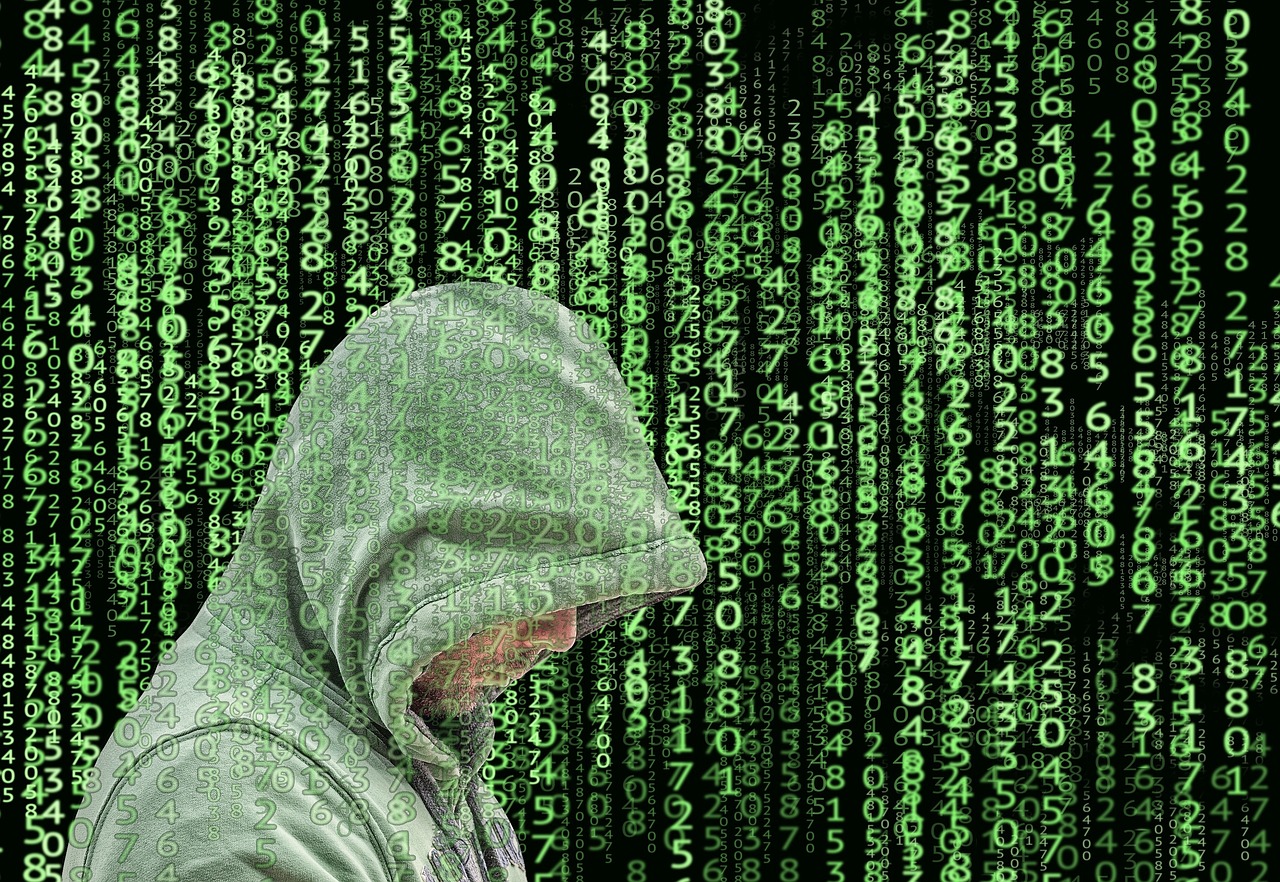Using VR to Prepare for Cyber Espionage Scenarios
In today's digital landscape, the stakes are higher than ever when it comes to protecting sensitive information. With cyber espionage on the rise, organizations are increasingly looking for innovative ways to train their employees to recognize and mitigate these threats. Enter Virtual Reality (VR)—a game-changing technology that offers immersive training experiences that can transform how we prepare for cyber espionage scenarios.
Imagine stepping into a virtual world where you can confront cyber threats head-on, all while being in a safe environment. This is the power of VR. It allows individuals and teams to engage in realistic simulations that mimic real-world cyber attacks. By using VR, organizations can create scenarios that reflect the complexities and challenges of actual cyber espionage incidents, making the training both relevant and impactful.
But why is this important? Well, traditional training methods often fall short in delivering the kind of engagement and retention needed for effective learning. By utilizing VR, companies can foster a more interactive and captivating training experience. Participants are not just passive learners; they become active players in their own education, which can significantly enhance their understanding of cyber threats and how to combat them.
Furthermore, VR training can be tailored to meet the specific needs of an organization. Whether it’s a small startup or a large corporation, VR can scale to fit the size and requirements of any team. This flexibility ensures that every employee, regardless of their role, can benefit from comprehensive training on cyber espionage tactics.
In essence, VR is not just a tool for training; it’s a revolutionary approach to preparing for the unknown. As cyber threats continue to evolve, so must our methods of training. By embracing VR technology, organizations can stay one step ahead of potential attackers, ensuring that they are well-equipped to handle any situation that arises.
- What is cyber espionage? Cyber espionage refers to the act of obtaining confidential information through illicit means, often targeting governments or corporations.
- How does VR training work? VR training immerses participants in a simulated environment where they can interact with various cyber scenarios, allowing for hands-on experience without real-world consequences.
- What are the benefits of using VR for training? Benefits include increased engagement, improved retention of information, safe experimentation with scenarios, and the ability to conduct realistic drills.
- Is VR training cost-effective? Yes, implementing VR training can reduce costs associated with traditional training methods by minimizing the need for physical resources and travel.
- How can organizations measure the effectiveness of VR training? Organizations can use metrics such as participant feedback, knowledge assessments, and performance in simulated scenarios to evaluate training effectiveness.

The Rise of Cyber Espionage
This article explores how virtual reality (VR) can be utilized to train individuals and organizations in recognizing and mitigating cyber espionage threats effectively through immersive simulations.
In our increasingly digital world, cyber espionage has emerged as a formidable threat, reshaping the landscape of national security and corporate integrity. Gone are the days when espionage was confined to the shadows of physical infiltration; today, it operates in the vast expanses of cyberspace. This evolution has been fueled by the rapid advancement of technology, enabling malicious actors to exploit vulnerabilities in systems, networks, and even human behavior.
Cyber espionage tactics have evolved significantly over the years. Initially, these threats were predominantly state-sponsored, targeting government entities and defense contractors. However, the playing field has expanded dramatically. Now, corporations, NGOs, and even individuals can find themselves in the crosshairs of sophisticated cyber attackers. The implications of these attacks can be devastating, leading to data breaches, intellectual property theft, and severe reputational damage.
To illustrate the gravity of the situation, consider the following statistics:
| Year | Number of Cyber Espionage Incidents | Estimated Cost (in Billion USD) |
|---|---|---|
| 2018 | 250 | 1.5 |
| 2019 | 300 | 2.0 |
| 2020 | 400 | 3.5 |
| 2021 | 500 | 4.0 |
As shown in the table above, the number of cyber espionage incidents has been steadily increasing, along with the associated costs. This trend highlights the urgent need for individuals and organizations to be proactive in their defenses. But why has cyber espionage become so prevalent? One reason is the anonymity that the internet provides. Attackers can operate from anywhere in the world, making it incredibly challenging to trace their origins or motives.
Additionally, the advent of advanced technologies such as artificial intelligence and machine learning has given attackers new tools to exploit. These technologies can automate attacks, making them faster and more efficient. As a result, organizations must not only defend against these threats but also be prepared to respond swiftly and effectively when they occur.
In conclusion, the rise of cyber espionage is a pressing concern that cannot be ignored. With the stakes higher than ever, it’s critical for organizations to invest in training and preparedness to combat these threats. As we explore further, we will see how virtual reality can play a pivotal role in equipping individuals and organizations with the skills they need to recognize and mitigate cyber espionage scenarios effectively.
Virtual reality offers immersive experiences that can enhance learning and retention. This section explains how VR technology can be applied in training environments to simulate real-world cyber threats.
Training in VR allows for safe experimentation with cyber scenarios. This subsection highlights the advantages of VR, including increased engagement, improved skill development, and the ability to conduct realistic drills.
Implementing VR training can reduce costs associated with traditional training methods. This part examines how organizations can save resources while enhancing their cybersecurity preparedness through VR.
VR training programs can be easily scaled to accommodate various team sizes. This subsection discusses how organizations can implement VR training solutions for diverse groups of employees.
Creating realistic and challenging VR scenarios is crucial for effective training. This section details the key elements to consider when designing immersive cyber espionage simulations.
Evaluating the success of VR training programs is essential. This section discusses metrics and feedback mechanisms that can be utilized to assess the effectiveness of cyber espionage training.
Incorporating feedback from trainees can enhance VR programs. This subsection focuses on how organizations can use participant insights to refine and improve their training scenarios over time.
Real-world examples can illustrate the impact of VR training. This part highlights case studies where organizations successfully used VR to prepare for and mitigate cyber espionage threats.
- What is cyber espionage? Cyber espionage refers to the act of infiltrating a computer system or network to obtain confidential information.
- How can VR help in training for cyber espionage? VR provides immersive simulations that allow individuals to practice recognizing and responding to cyber threats in a safe environment.
- Is VR training cost-effective? Yes, VR training can reduce costs associated with traditional training methods by providing scalable and engaging learning experiences.

Understanding Virtual Reality in Training
Virtual reality (VR) is not just a buzzword; it's a powerful tool that's revolutionizing the way we approach training in various fields, including cybersecurity. Imagine stepping into a digital world where you can confront real-world threats without any real-world consequences. Sounds exciting, right? That’s the essence of VR training. By immersing individuals in simulated environments, VR allows them to experience and react to cyber espionage scenarios as if they were actually happening. This hands-on approach makes learning not only more engaging but also significantly more effective.
One of the key advantages of using VR in training is its ability to create immersive experiences. Unlike traditional training methods that often rely on passive learning—think lectures and reading materials—VR engages all the senses. Trainees can see, hear, and even interact with the environment, which leads to better retention of information. For instance, when participants navigate through a virtual office setting while trying to identify potential cyber threats, they’re not just learning; they're doing. This active participation is what sets VR apart from conventional training methods.
Furthermore, VR training can be tailored to the specific needs of an organization. Whether you're preparing a small team or a large corporation, VR scenarios can be customized to reflect the unique challenges faced by the organization. This flexibility ensures that training is relevant and directly applicable to real-world situations. Consider a scenario where a company is targeted by a phishing attack. In a VR setting, employees can practice identifying and responding to such threats in a controlled environment, allowing them to build confidence and competence before facing actual cyber threats.
Another exciting aspect of VR training is the ability to simulate high-pressure situations. Cyber espionage often involves rapid decision-making under stress. With VR, trainees can practice these skills in a safe space, learning how to remain calm and effective when the stakes are high. This kind of training can be invaluable, as it prepares individuals not just to recognize threats but to respond appropriately, potentially saving their organization from significant harm.
Moreover, the data collected during VR training sessions can provide valuable insights into trainee performance. By analyzing how individuals react to different scenarios, organizations can identify areas for improvement and tailor future training sessions to address those needs. This feedback loop is essential for continuous improvement, ensuring that training programs evolve alongside emerging cyber threats.
In summary, understanding how virtual reality can be integrated into training programs opens up a world of possibilities for organizations looking to enhance their cybersecurity preparedness. The immersive nature of VR, combined with its ability to simulate real-world scenarios, makes it an exceptional tool for training individuals to recognize and mitigate cyber espionage threats effectively. As we continue to advance in technology, embracing VR in training will not only become a trend but a necessity for those serious about cybersecurity.
- What is virtual reality training? Virtual reality training uses immersive simulations to provide hands-on experience in various scenarios, enhancing learning and retention.
- How does VR training improve cybersecurity skills? It allows individuals to practice responding to real-world cyber threats in a safe environment, building confidence and competence.
- Can VR training be customized for different organizations? Yes, VR training can be tailored to meet the specific needs and challenges of any organization.
- What are the benefits of using VR over traditional training methods? VR training is more engaging, provides hands-on experience, and allows for the simulation of high-pressure situations.

Benefits of VR Training
When it comes to training for cyber espionage scenarios, virtual reality (VR) is not just a buzzword; it's a game changer. Imagine stepping into a digital world where you can face real threats without the real-world consequences. This immersive technology allows trainees to engage with their environment, making the learning process not only effective but also exciting. The benefits of VR training are numerous and can significantly enhance an organization's ability to prepare for and respond to cyber threats.
One of the most notable advantages of VR training is increased engagement. Traditional training methods often involve lectures or passive learning, which can lead to boredom and disengagement. In contrast, VR immerses users in interactive scenarios where they can actively participate. This hands-on approach fosters a deeper understanding of complex concepts and keeps trainees motivated. Just like a video game, the more you play, the better you get, and the same applies to VR training.
Moreover, VR training improves skill development in a way that traditional methods simply can't match. Trainees can practice realistic drills in a controlled environment, allowing them to experiment with different strategies without the fear of making costly mistakes. For instance, if a team is learning to identify phishing attempts, they can interact with simulated emails and learn to spot red flags in real-time. This kind of practice is invaluable because it equips individuals with the skills they need to react swiftly and effectively in real-world situations.
Another significant benefit is the cost-effectiveness of VR solutions. While the initial investment in VR technology may seem steep, the long-term savings are substantial. Traditional training often requires travel, venue rentals, and materials, which can quickly add up. In contrast, VR training can be conducted in-house, reducing overhead costs. Additionally, organizations can save on time, as VR training can be tailored to fit their specific needs and schedules.
Scalability is yet another advantage of VR training programs. As organizations grow, so do their training needs. VR solutions can easily adapt to accommodate various team sizes, from small groups to large departments. This flexibility means that whether you're training a handful of employees or a whole division, the immersive experience can be replicated without losing its effectiveness. It’s like having a training program that grows with your organization, ensuring that everyone is always prepared.
In summary, the benefits of VR training in preparing for cyber espionage scenarios are clear. It not only enhances engagement and skill development but also offers cost-effective and scalable solutions. By leveraging the power of virtual reality, organizations can create a training environment that is not only effective but also dynamic and engaging. This ensures that employees are not just trained but are truly prepared to face the challenges of the digital age.
- What is VR training? VR training uses virtual reality technology to create immersive training environments where users can practice skills in realistic scenarios.
- How does VR training improve engagement? VR training engages users through interactive experiences, making learning more enjoyable and effective compared to traditional methods.
- Is VR training cost-effective? Yes, while there may be initial costs, VR training can save organizations money in the long run by reducing travel and material expenses.
- Can VR training be scaled for large teams? Absolutely! VR training programs are highly scalable and can be adjusted to fit the needs of any organization, regardless of size.

Cost-Effectiveness of VR Solutions
When it comes to training for cyber espionage scenarios, the cost-effectiveness of virtual reality (VR) solutions is a game changer. Traditional training methods often involve extensive resources, including hiring experts, organizing physical workshops, and developing intricate training materials. In contrast, VR training provides a more streamlined approach that can significantly reduce these costs while enhancing training effectiveness.
Imagine being able to simulate high-stakes cyber environments without the need for physical setups or the risk of real-world consequences. With VR, organizations can create immersive training sessions that allow employees to experience and respond to cyber threats in a controlled setting. This not only saves money but also minimizes the time spent on training. For instance, a typical in-person workshop might take days to prepare and execute, while a VR session can be developed and deployed in a fraction of the time.
Furthermore, the scalability of VR training solutions means that organizations can train multiple employees simultaneously, regardless of their geographical location. This is particularly beneficial for large corporations with teams spread across different regions. By using VR, companies can ensure that all employees receive the same level of training without the associated travel and accommodation costs.
Let's break down some of the cost-saving aspects of VR training:
- Reduced Travel Expenses: With VR, there's no need for employees to travel for training sessions, which can lead to significant savings.
- Lower Material Costs: Traditional training often requires printed materials, tools, and equipment, while VR relies on digital assets, reducing material costs.
- Minimized Downtime: Employees can engage in VR training during work hours without the need to leave their posts for extended periods, thus maintaining productivity.
Moreover, the initial investment in VR technology can be offset by the long-term benefits it provides. As organizations begin to see the return on their investment through improved employee performance and a reduction in cyber incidents, the value of VR training becomes increasingly clear. For example, a company that invests in VR training may find that their employees are better equipped to identify and mitigate cyber threats, ultimately saving the organization from costly breaches and reputational damage.
In summary, the cost-effectiveness of VR solutions is not just about the immediate savings; it’s about creating a sustainable training model that prepares organizations for the evolving landscape of cyber threats. By embracing VR, companies can foster a culture of continuous learning and adaptability, ensuring they stay one step ahead in the fight against cyber espionage.
Q1: How much does VR training typically cost?
A: The cost of VR training can vary widely depending on the complexity of the simulations and the technology used. However, many organizations find that the long-term savings outweigh the initial investment.
Q2: Can VR training be customized for specific industries?
A: Absolutely! VR training can be tailored to meet the unique needs of different industries, making it a versatile tool for various sectors, including finance, healthcare, and technology.
Q3: Is VR training effective for all employees?
A: Yes, VR training is designed to be engaging and accessible for employees at all levels. It can help to enhance skills and knowledge regardless of prior experience.
Q4: How do organizations measure the success of VR training?
A: Organizations can assess the effectiveness of VR training through metrics such as employee performance, feedback from participants, and the reduction of security incidents over time.

Scalability of VR Training Programs
When it comes to training programs, especially in the realm of cybersecurity, the ability to scale is crucial. Virtual reality (VR) training programs shine in this aspect, offering organizations the flexibility to adapt to their specific needs. Imagine a scenario where a company suddenly hires a large group of new employees. With traditional training methods, ramping up can be a logistical nightmare, requiring extensive resources and time. However, with VR, the same immersive training experience can be delivered to many individuals simultaneously, regardless of their physical location.
One of the most remarkable features of VR training is its customizability. Organizations can design scenarios that cater to different skill levels and roles within the company. For instance, a cybersecurity team may face more complex scenarios than entry-level employees. VR allows for tailored experiences that can effectively challenge each group without overwhelming them. This adaptability ensures that every employee receives relevant training that is engaging and beneficial.
Moreover, the cost-effectiveness of VR training programs cannot be overlooked. Traditional training often involves travel expenses, accommodation, and material costs, especially when bringing in experts to conduct workshops. In contrast, once a VR training module is developed, it can be reused countless times at no additional cost. This not only saves money but also ensures that training can be consistently updated to reflect the latest cyber threats and tactics.
Another significant advantage is the ease of implementation. VR training can be rolled out quickly across various departments and locations. For multinational corporations, this means that a team in New York can participate in the same training exercise as a team in Tokyo without the need for travel. This global reach fosters a unified approach to cybersecurity, ensuring that all employees are on the same page when it comes to recognizing and responding to cyber espionage threats.
To illustrate the scalability of VR training programs, consider the following table that outlines key factors:
| Factor | Traditional Training | VR Training |
|---|---|---|
| Cost | High | Low after initial development |
| Time to Deploy | Long | Quick |
| Adaptability | Limited | Highly customizable |
| Engagement | Variable | High |
As organizations continue to recognize the importance of cybersecurity, the scalability of VR training programs will undoubtedly become a vital component of their training strategies. By harnessing the power of VR, companies can ensure that they are not only prepared for current threats but are also agile enough to adapt to future challenges.
- What is VR training? VR training uses virtual reality technology to create immersive training experiences that simulate real-world scenarios.
- How does VR training enhance learning? VR training enhances learning by providing hands-on experiences in a safe environment, allowing for experimentation without real-world consequences.
- Is VR training cost-effective? Yes, while the initial development of VR training modules may be expensive, the long-term savings from reduced travel and material costs make it cost-effective.
- Can VR training be scaled for large organizations? Absolutely! VR training can be easily implemented across various teams and locations, making it ideal for large organizations.

Designing Effective VR Scenarios
When it comes to for cyber espionage training, the key lies in creating immersive environments that truly mimic the chaos and complexity of real-world cyber threats. Think of it like crafting a thrilling movie plot—every detail matters, from the characters to the setting, and the plot twists that keep the audience on the edge of their seats. In this case, the audience is your team, and the plot is a series of cyber incidents they need to navigate.
One of the first steps in this process is to identify the specific threats your organization faces. Are you more concerned about insider threats, phishing attacks, or advanced persistent threats (APTs)? By pinpointing these vulnerabilities, you can tailor scenarios that address them directly. For instance, if your organization has been targeted by phishing attacks in the past, a VR scenario could simulate a realistic phishing attempt, allowing trainees to practice their response in a safe environment.
Next, consider the realism of the scenario. The more authentic the experience, the better the learning outcome. This includes not only the visual aspects but also the auditory elements. Imagine the sound of a notification pinging as a new email arrives, or the tension of a clock ticking down during a simulated data breach. These sensory details can significantly enhance engagement and retention. You want your trainees to feel the pressure, just like they would in a real cyber incident.
Moreover, it's crucial to incorporate interactive elements into your VR scenarios. Allow participants to make decisions that influence the outcome of the simulation. For example, if they choose to ignore a suspicious email, the scenario could escalate, leading to a data breach. This interactivity not only keeps participants engaged but also helps them understand the consequences of their actions in a tangible way.
Another vital aspect is to include feedback mechanisms within the VR training. After each scenario, provide trainees with insights on their performance. What decisions did they make? What could they have done differently? This reflective practice encourages continuous learning and improvement. You might even consider using a scoring system to quantify their performance, which can help in tracking progress over time.
Lastly, don’t forget to test and iterate on your VR scenarios. Just like any good game developer, you should be prepared to tweak your simulations based on user feedback. If trainees find a scenario too easy or unrealistic, it’s essential to adjust it to maintain engagement and educational value. This ongoing refinement process ensures that your training remains relevant and effective.
To summarize, designing effective VR scenarios for cyber espionage training involves:
- Identifying specific threats
- Ensuring realism through sensory details
- Incorporating interactivity for decision-making
- Implementing feedback mechanisms for improvement
- Testing and iterating based on user experiences
By focusing on these elements, organizations can create VR training scenarios that not only prepare their teams for potential cyber threats but also empower them to act decisively and effectively when faced with real-world challenges.
Q: What are the main benefits of using VR for training in cyber espionage?
A: VR training offers immersive experiences that enhance learning retention, allowing trainees to practice in a safe environment. It also provides opportunities for interactive learning and immediate feedback.
Q: How can organizations measure the effectiveness of their VR training?
A: Organizations can use performance metrics, participant feedback, and scenario outcomes to evaluate the effectiveness of their VR training programs.
Q: Can VR training be customized for different industries?
A: Absolutely! VR training scenarios can be tailored to address specific threats and challenges faced by different industries, making them versatile tools for cybersecurity preparedness.

Measuring Training Effectiveness
When it comes to training, especially in the realm of cyber espionage, measuring effectiveness is crucial. After all, how do you know if your team is truly prepared to face the lurking threats in the digital shadows? The answer lies in a combination of metrics, feedback mechanisms, and continuous assessment. By employing a systematic approach, organizations can gauge how well their VR training translates into real-world skills and awareness.
One of the first steps in measuring training effectiveness is to establish clear objectives before the training begins. What specific skills or knowledge should participants acquire? Are they meant to recognize phishing attempts, understand data breaches, or respond to insider threats? By defining these goals, you create a benchmark against which success can be measured.
Next, organizations can utilize a variety of metrics to evaluate the training's impact. These metrics can include:
- Pre- and Post-Training Assessments: Conducting assessments before and after the VR training can provide quantitative data on knowledge gains.
- Engagement Levels: Tracking how actively participants engage with the VR scenarios can indicate how immersive and effective the training is.
- Incident Response Time: Measuring the speed and accuracy of participants' responses during simulations can help assess their preparedness for real situations.
Feedback mechanisms also play a pivotal role in understanding training effectiveness. After each VR session, gathering insights from participants can uncover what worked well and what didn’t. This can be done through surveys, interviews, or even informal discussions. The feedback can then be analyzed to identify common trends, which can inform future training iterations.
Moreover, organizations can implement a longitudinal study approach, where they track participants over time to assess how well they retain the skills learned in VR training. This could involve follow-up assessments at regular intervals post-training to see if knowledge and skills are maintained or if refresher training is needed.
Finally, it’s essential to create a culture of continuous improvement. By regularly updating VR scenarios based on the latest threats and incorporating feedback from trainees, organizations can ensure that their training remains relevant and effective. This iterative process not only enhances the training experience but also fortifies the organization’s overall cybersecurity posture.
In summary, measuring the effectiveness of VR training programs is not just about collecting data; it’s about creating a feedback loop that fosters growth and adaptation. By focusing on clear objectives, utilizing diverse metrics, gathering feedback, and committing to continuous improvement, organizations can significantly enhance their readiness against cyber espionage threats.
- How can organizations ensure that VR training is relevant to current threats?
By regularly updating the training scenarios based on the latest cybersecurity trends and threats, organizations can keep their training relevant and effective. - What types of metrics are most effective for measuring training success?
Pre- and post-training assessments, engagement levels, and incident response times are among the most effective metrics to gauge training success. - Can feedback from trainees really improve VR training programs?
Absolutely! Trainee feedback provides valuable insights that can help refine and enhance training scenarios, making them more effective over time.

Feedback and Continuous Improvement
In the realm of virtual reality (VR) training, feedback isn't just a nice-to-have; it's a crucial component that drives the evolution of training programs. Imagine stepping into a VR simulation designed to mimic a cyber espionage attack. You navigate through the scenario, making decisions that could impact your organization's security. Once the simulation concludes, what happens next? This is where feedback comes into play, shaping the experience for future trainees and enhancing the overall effectiveness of the training.
Organizations can gather feedback through various methods, including post-simulation surveys, one-on-one interviews, and group discussions. These insights are invaluable, allowing trainers to understand what worked well and what didn’t. For instance, if trainees report that certain scenarios felt unrealistic or were too complex, adjustments can be made to ensure that future sessions are more aligned with real-world challenges.
Moreover, continuous improvement is not a one-time effort; it's an ongoing process. By regularly updating training scenarios based on the latest cyber threats and incorporating trainee feedback, organizations can maintain a dynamic training environment. This adaptability is essential in the fast-paced world of cybersecurity, where new threats emerge daily. A well-designed feedback loop enables organizations to stay ahead of the curve, ensuring their teams are always prepared for the next wave of cyber espionage tactics.
To illustrate the importance of feedback and continuous improvement in VR training, consider the following table that outlines key feedback mechanisms and their benefits:
| Feedback Mechanism | Description | Benefits |
|---|---|---|
| Post-Simulation Surveys | Collecting trainee responses after a VR session. | Identifies strengths and weaknesses in the training program. |
| Focus Groups | Group discussions to gather collective insights. | Encourages collaboration and diverse feedback. |
| Performance Metrics | Analyzing trainee performance data during simulations. | Provides quantifiable evidence of training effectiveness. |
By leveraging these feedback mechanisms, organizations can create a culture of continuous improvement. It's not just about training once and forgetting; it’s about evolving with the landscape of cyber threats. In a world where cyber espionage tactics are constantly changing, organizations that prioritize feedback and improvement will not only enhance their training programs but also fortify their defenses against potential breaches.
- How often should feedback be collected after VR training? It's beneficial to collect feedback after every training session to ensure timely improvements.
- Can feedback be collected anonymously? Yes, anonymous surveys can encourage more honest and constructive feedback from participants.
- What are some common challenges in gathering feedback? Some challenges include participant reluctance to provide negative feedback and ensuring that feedback is actionable.

Case Studies of Successful Implementation
When it comes to cybersecurity training, nothing beats the real-world application of theoretical knowledge. Organizations across various sectors have begun to embrace virtual reality (VR) as a groundbreaking tool in preparing their teams for the complexities of cyber espionage. Let's dive into some compelling case studies that showcase the successful implementation of VR training programs.
One notable example comes from a leading financial institution that faced increasing threats from cyber espionage. Recognizing the need for a robust training program, they partnered with a VR development firm to create immersive simulations of potential cyberattack scenarios. Trainees were placed in lifelike environments where they had to identify and respond to threats in real-time. The results were remarkable: the institution reported a 30% increase in incident response times and a significant reduction in successful phishing attempts.
Another inspiring case is that of a government agency tasked with national security. They utilized VR to train their cybersecurity teams by simulating high-pressure situations where quick decision-making was crucial. The agency designed scenarios based on actual incidents, allowing participants to experience the chaos of a cyber breach without the real-world consequences. Feedback from participants indicated they felt more prepared and confident in their roles, leading to a 25% improvement in overall team performance during drills.
Moreover, a technology company specializing in software development implemented VR training to enhance their developers' understanding of secure coding practices. They created a series of interactive modules where developers could face common vulnerabilities in a controlled environment, learning to identify and mitigate them effectively. The company found that after completing the VR training, developers were able to reduce security flaws in their code by an impressive 40%.
These case studies highlight not only the effectiveness of VR in training but also its ability to foster a culture of cyber awareness within organizations. By providing employees with realistic scenarios, companies can ensure that their teams are not only informed but also prepared to tackle the ever-evolving landscape of cyber threats.
In summary, the successful implementation of VR training programs has demonstrated significant improvements in incident response times, team performance, and overall cybersecurity posture. As more organizations recognize the value of immersive training, we can expect to see a shift in how companies approach cyber espionage preparedness.
- What is VR training for cybersecurity? VR training for cybersecurity involves using virtual reality technology to create immersive simulations that help individuals and organizations prepare for cyber threats.
- How does VR training improve learning retention? VR training enhances learning retention by providing interactive experiences that engage users, making it easier for them to remember and apply what they've learned.
- Are VR training programs cost-effective? Yes, while there may be initial setup costs, VR training can save organizations money in the long run by reducing the need for physical training resources and minimizing the risk of cyber incidents.
- Can VR training be scaled for large teams? Absolutely! VR training programs can be designed to accommodate various team sizes, making it a flexible solution for organizations of all types.
Frequently Asked Questions
- What is cyber espionage?
Cyber espionage refers to the practice of using digital means to gather confidential information from individuals, organizations, or governments without their consent. It often involves sophisticated hacking techniques aimed at stealing sensitive data, trade secrets, or strategic plans.
- How can VR be used for training against cyber espionage?
Virtual reality can create immersive training environments that simulate real-world cyber threats. Trainees can experience various scenarios that mimic actual cyber attacks, allowing them to practice their response strategies in a safe and controlled setting.
- What are the benefits of VR training for cybersecurity?
VR training offers numerous advantages, including enhanced engagement, improved retention of information, and the ability to practice skills in realistic scenarios. It allows participants to experiment with different approaches to problem-solving without the risk of real-world consequences.
- Is VR training cost-effective?
Yes, implementing VR training can be cost-effective in the long run. It reduces expenses associated with traditional training methods, such as travel and material costs, while providing a more engaging and effective learning experience.
- Can VR training programs be scaled for larger teams?
Absolutely! VR training programs are highly scalable, meaning organizations can easily adjust them to accommodate various team sizes. This flexibility allows for effective training across different departments or even entire organizations.
- How do we measure the effectiveness of VR training?
Effectiveness can be measured through various metrics, such as participant feedback, performance assessments, and the ability to apply learned skills in real-world situations. Continuous improvement based on this feedback is key to refining VR training programs.
- Can you provide examples of successful VR training implementations?
Yes! There are several case studies showcasing organizations that have successfully integrated VR training into their cybersecurity protocols. These examples highlight improved preparedness and a noticeable reduction in cyber threats post-training.



















